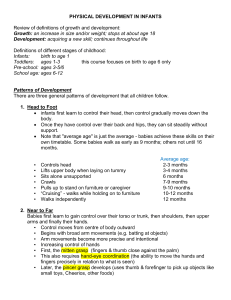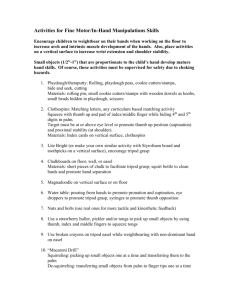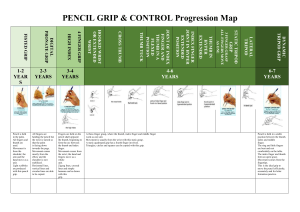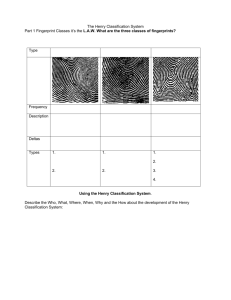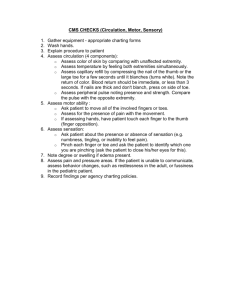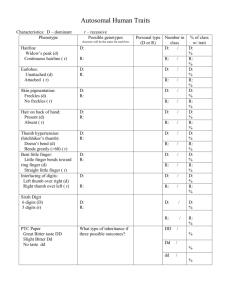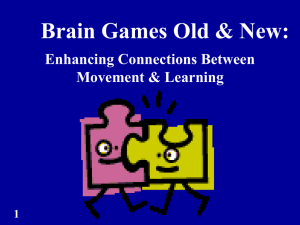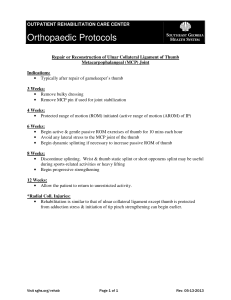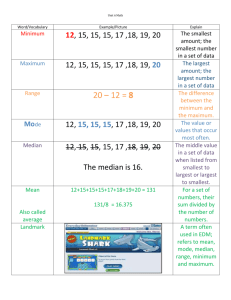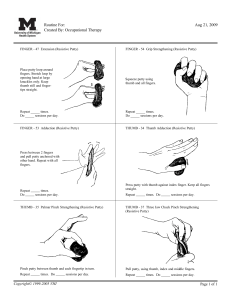Occupational Therapy: Grasp Patterns & Pencil Grip
advertisement
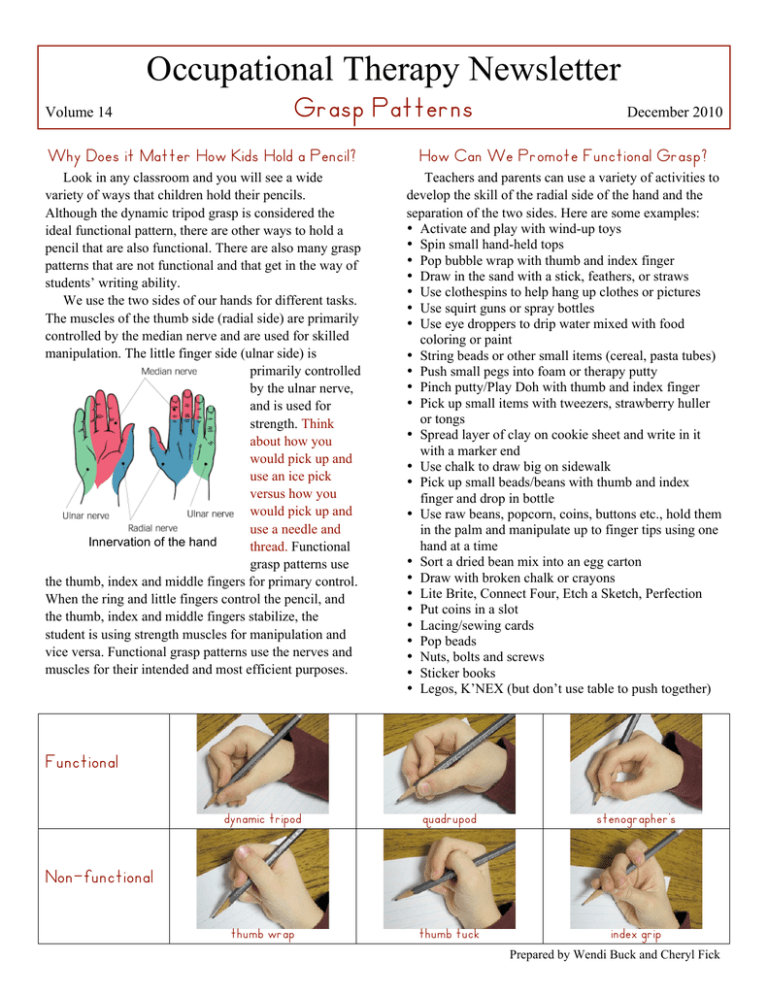
Occupational Therapy Newsletter Volume 14 Grasp Patterns December 2010 Why Does it Matter How Kids Hold a Pencil? How Can We Promote Functional Grasp? Look in any classroom and you will see a wide variety of ways that children hold their pencils. Although the dynamic tripod grasp is considered the ideal functional pattern, there are other ways to hold a pencil that are also functional. There are also many grasp patterns that are not functional and that get in the way of students’ writing ability. We use the two sides of our hands for different tasks. The muscles of the thumb side (radial side) are primarily controlled by the median nerve and are used for skilled manipulation. The little finger side (ulnar side) is primarily controlled by the ulnar nerve, and is used for strength. Think about how you would pick up and use an ice pick versus how you would pick up and use a needle and Innervation of the hand thread. Functional grasp patterns use the thumb, index and middle fingers for primary control. When the ring and little fingers control the pencil, and the thumb, index and middle fingers stabilize, the student is using strength muscles for manipulation and vice versa. Functional grasp patterns use the nerves and muscles for their intended and most efficient purposes. Teachers and parents can use a variety of activities to develop the skill of the radial side of the hand and the separation of the two sides. Here are some examples: • Activate and play with wind-up toys • Spin small hand-held tops • Pop bubble wrap with thumb and index finger • Draw in the sand with a stick, feathers, or straws • Use clothespins to help hang up clothes or pictures • Use squirt guns or spray bottles • Use eye droppers to drip water mixed with food coloring or paint • String beads or other small items (cereal, pasta tubes) • Push small pegs into foam or therapy putty • Pinch putty/Play Doh with thumb and index finger • Pick up small items with tweezers, strawberry huller or tongs • Spread layer of clay on cookie sheet and write in it with a marker end • Use chalk to draw big on sidewalk • Pick up small beads/beans with thumb and index finger and drop in bottle • Use raw beans, popcorn, coins, buttons etc., hold them in the palm and manipulate up to finger tips using one hand at a time • Sort a dried bean mix into an egg carton • Draw with broken chalk or crayons • Lite Brite, Connect Four, Etch a Sketch, Perfection • Put coins in a slot • Lacing/sewing cards • Pop beads • Nuts, bolts and screws • Sticker books • Legos, K’NEX (but don’t use table to push together) Functional dynamic tripod quadrupod stenographer’s thumb wrap thumb tuck index grip Non-functional Prepared by Wendi Buck and Cheryl Fick
